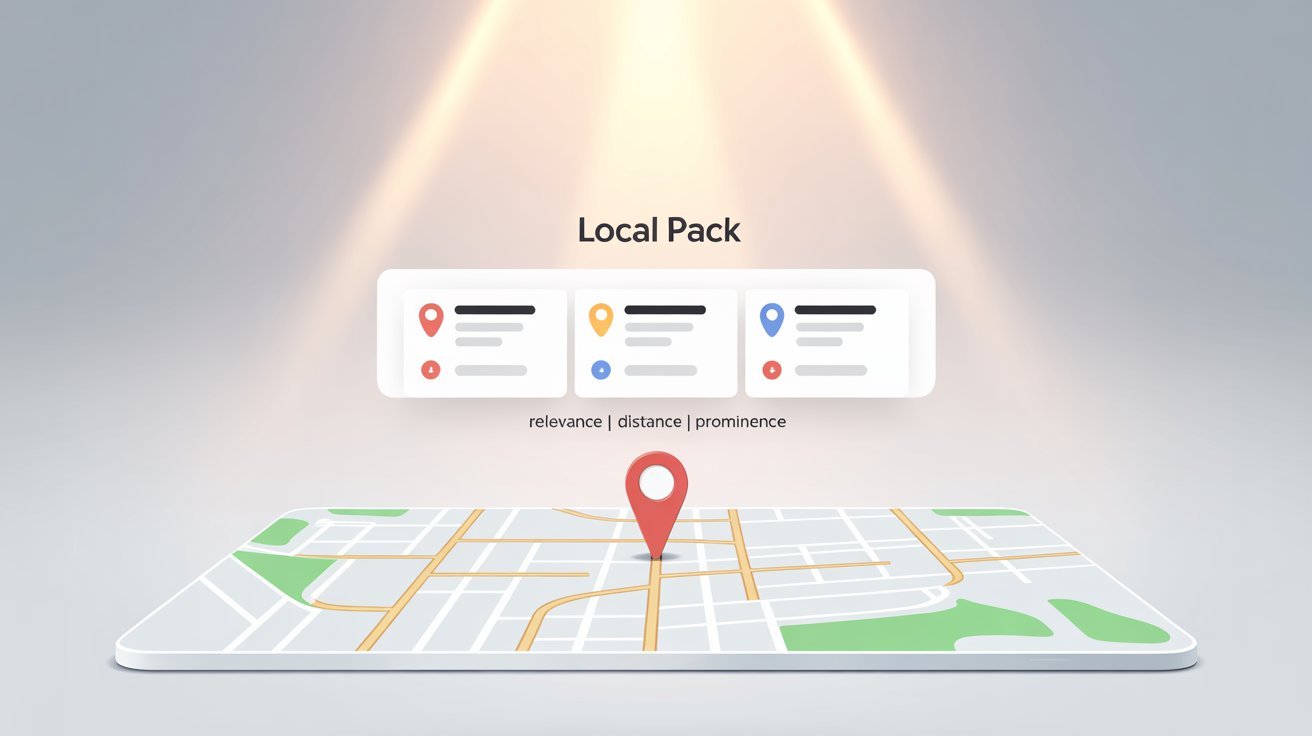
Why Google Maps Optimization Matters for Service Businesses?
If you run a service-based business — plumber, HVAC, landscaper, cleaning crew — your Maps presence often decides who gets the call.
Most local lookups happen inside Google Maps, especially “near me” searches on phones. People tap the first few results with strong reviews and clear details.
If you’re not in the Local Pack (the top three on Maps), you’re missing easy wins every day.
How Google Ranks Service-Based Businesses
Google weighs three things:
- Relevance – How well your listing fits the search (keywords, categories, services).
- Distance – How close your address or service area is to the searcher.
- Prominence – How established you look online (reviews, citations, links).
For service-area businesses (SABs), like mobile groomers, electricians, etc, Google leans on your service area settings, not a storefront. Set them right.
Step-by-Step: How to Optimize Your Google Business Profile
Claim and Verify Your Listing
- Open Google Business Profile Manager and claim your listing.
- Use your real business name and a local number.
- If you don’t meet clients at a public office, select “I deliver goods and services to my customers.”
- Verify by phone, email, postcard, or video — whatever’s offered.
Pro Tip: A local area code signals trust and local relevance.
Set Up Accurate Service Areas
- You serve customers where they are.
- Add the cities, ZIP codes, or neighborhoods you cover (up to 20).
- Skip blanket claims like “All of California.” Use specifics: “San Diego, La Jolla, Escondido.”
- Review quarterly as your coverage grows.
This helps Google match you with searchers inside your true footprint.
Optimize Every Detail of Your Profile
- Fill everything you can — it’s an easy lift with real payoff.
- Add hours, services, website, and booking links.
- Write a clear, natural description with real keywords:
Example: “Family-owned HVAC company serving Ellicott City for 15+ years. Specializing in AC repair, installation, and maintenance.”
- Pick accurate categories (e.g., Plumber as primary; Water Heater Service as secondary).
Pro Tip: Keep it readable. Forced keywords turn people off and don’t help.
Add Photos and Short Videos
- Visuals build trust and get clicks.
- Post sharp images: team, vehicles, tools, finished jobs.
- Use geo-tagged photos to reinforce local signals.
- Share quick 30-second videos showing work in action — these posts tend to earn more eyeballs now.
Refresh visuals at least monthly. Consistency wins.
Get (and Manage) Customer Reviews
Reviews move the needle for service businesses.
- Ask for feedback after you finish the job.
- Send a direct review link by text or email, or add a QR code to invoices.
- Reply to every review and add natural local context (“Thanks for trusting our Denver HVAC team!”).
Fresh, positive reviews can bump you into the Local Pack — especially when competitors lag.
Post Regularly on Google
Use Google Posts for promos, seasonal offers, and updates.
Examples:
- “10% off emergency plumbing this week!”
- “Now booking spring landscaping in Tamarac.”
Once a week is a solid rhythm. Active listings look maintained — and tend to rank better.
Advanced Optimization Strategies
Build Local Citations and Backlinks
List your business on trusted directories: Yelp, Angi, Nextdoor, Thumbtack, Bing Places.
- Keep NAP (Name, Address, Phone) identical everywhere.
- Partner with local groups, sponsor events, or contribute to community blogs for local links.
These signals grow your prominence.
Leverage Voice Search Optimization
More people ask voice assistants for nearby help.
- Target conversational phrases like “Who installs water heaters near me?”
- Add schema markup for service areas, hours, and reviews on your site.
- Keep mobile load times under three seconds — slow pages drag you down.
Track Performance with UTM Links and Insights
Don’t skip the analytics.
- Add UTM tags to the website and booking links in your profile.
- Check GBP Insights weekly for calls, directions, and clicks.
- Use the findings to tune keywords, adjust service areas, and set posting cadence.
BrightLocal, Whitespark, and Local Falcon can show your ranking radius and growth.
Common Mistakes to Avoid
- Fake addresses or P.O. boxes — violations that risk suspension.
- Letting old info or unanswered reviews pile up.
- Stuffing keywords into your business name (“Best Cheap Plumber Dallas”) — actively downranked in 2026.
Run a quick “Maps audit” each month to keep things tight.
Measuring Your Success
How to tell it’s working:
- Track calls, messages, and direction requests from your profile.
- Watch discovery searches (“plumber near me”) in GBP Insights.
- Compare traffic and conversions month over month in Google Analytics.
If views, calls, and reviews climb steadily, you’re on the right track.
“Our Local SEO in the AI Era: How Service Businesses Can Still Win guide shows how reputation management and geo-targeting drive more calls.”
FAQ: Google Maps for Service Businesses
Yes. Choose “service area business.” Your address stays hidden, and you can still rank locally.
At least monthly — new photos, prompt replies to reviews, and fresh posts.
Ask right after service and send a direct link or QR code. A short, personal follow-up helps.
Only if they’re part of your real, legal name. Keyword stuffing gets penalized.
Typically 30–60 days with consistent updates, reviews, and engagement.
Final Thoughts
For service businesses, Google Maps is today’s word-of-mouth. When someone searches for “electrician near me” or “Best Marketing Agency in Kansas City ,” they pick from the top three.
Keep your profile accurate, active, and visual. Keep reviews coming. Do that, and you’ll outpace rivals, earn more calls, and grow locally through 2026 and beyond.
At Revolute X Digital, we help service businesses climb Google Maps with practical local SEO, reputation management, and geo-targeted strategies. We make sure you show up where it counts — at the top.
Jason
We are an Affordable Digital Marketing Agency in Shawnee with budget-friendly solutions to amplify your brand. Elevate your business without compromising quality or cost.
